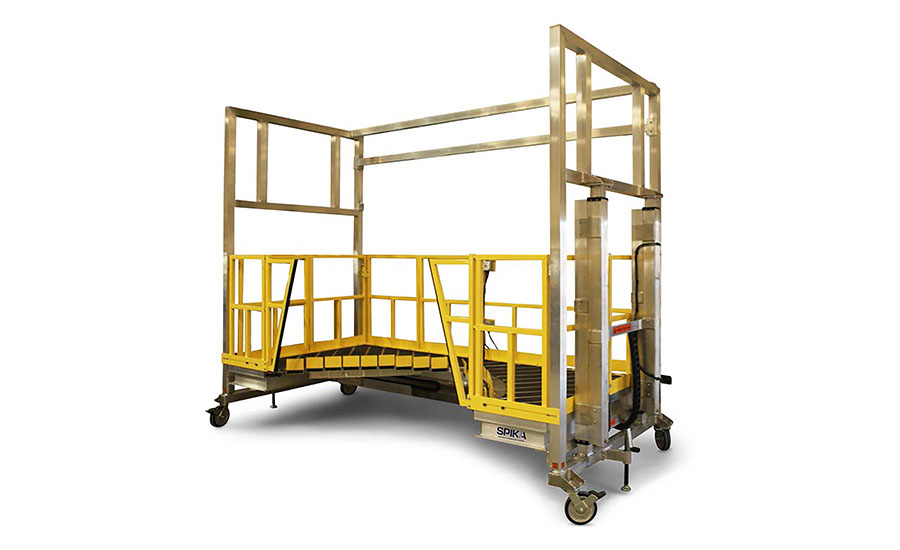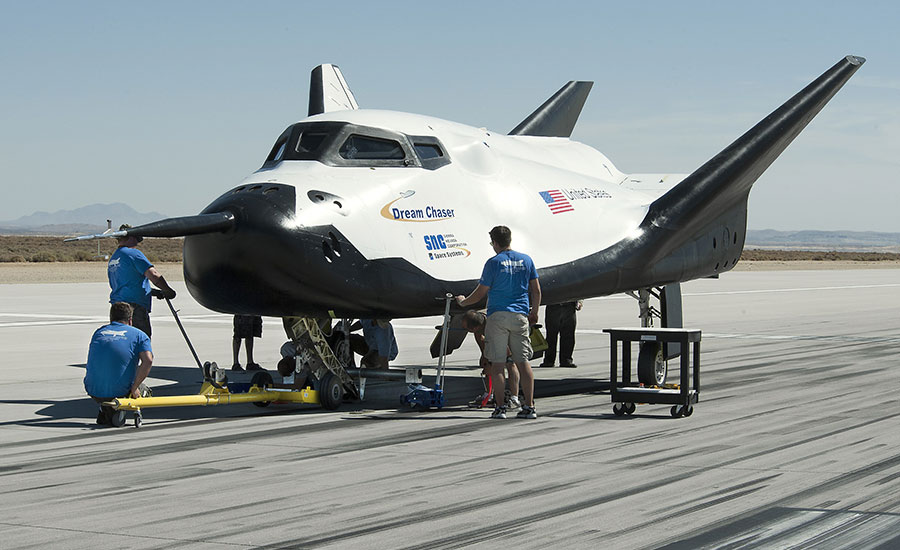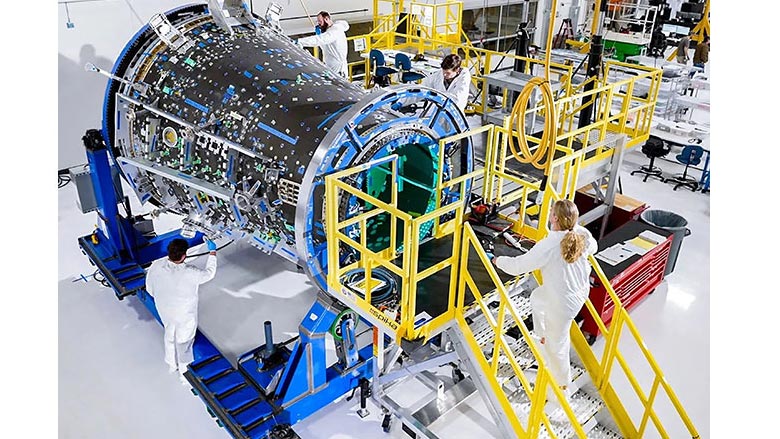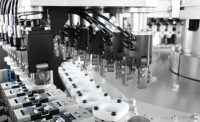Historically, at least 20 percent of ASSEMBLY’s readers make products that are larger than a 6-foot cube, including buses, tractors, trains, yachts, jets, helicopters, and even rockets and missiles. Accessing such large assemblies poses a challenge. Ladders offer little freedom of movement and are an accident waiting to happen. They could also damage fragile surfaces or mechanisms.
Mobile elevated work platforms that can be customized to each assembly are a better option. Such platforms are the specialty of Spika Design and Manufacturing inLewistown, MT.
The company’s roots go back to 1981, when Tom Spika took over the family ranch outside of Kolin, MT, and started a mobile welding business to supplement his income. Tom eventually took a full-time welding job in Lewistown, MT, before starting Montana Aviary Co. with his wife Carol in 1999. Eventually, Montana Aviary became Spika Design and Manufacturing when the Spika family won a contract to design and manufacture aluminum maintenance stands for military helicopters. The company has been making specialty work stands ever since.
Constructed of steel and aluminum, the company’s mobile, modular platforms can be configured to meet the needs of any manufacturing space or product design. The company has manufactured work stands for a variety of industries, including aerospace, defense and mass transit. With options for height adjustability, contour conformance, cantilevered access and onboard utilities, Spika platforms enable workers to get their jobs done safely and efficiently.

This mobile platform was designed to work on the Dream Chaser spacecraft. Photo courtesy Spika Design and Manufacturing
It Actually Is Rocket Science
One of Spika’s recent projects was for a manufacturer of advanced propulsion and energetics systems. Workers needed to access the upper half of a rocket nozzle to weld various parts. To accomplish this task, workers set up scaffolding using wooden shipping pallets. However, this was neither safe nor comfortable. The setup posed a significant risk of slip-and-fall injuries, not to mention damage to the nozzle.
Another issue was that workers had to complete tasks at different heights. The current setup was at a fixed height, and a significant amount of time was being lost going up and down for equipment and tools. The manufacturer needed one platform that could provide multiple work heights and meet the space constraints of the project.
This led the company to seek out a platform that was more stable, versatile and easy to move. Safety could not be compromised. The new platform would need to meet the following requirements:
- It would need to provide access to varying heights, from ground level to a maximum of 8.5 feet.
- It would have to accommodate the conical shape of the nozzle, whether it is upright or inverted. The circular opening atop the platform would have to be adjustable as the working height changed. Sliders would have to close off gaps with the nozzle’s surface, as well as accommodate parts or features protruding from the nozzle. The location of protruding features would vary, depending on the orientation of the cone.
- The platform would have to be mobile and lightweight, but would need to be stable while positioned around the sensitive work surface.
Spika got the job because it had provided OSHA-compliant products to many of the manufacturer’s suppliers. Spika worked directly with the manufacturer throughout the design process, providing CAD files, drawings and supplementary data to support reviews and integration of the new platform into its production process.
Drawing on years of experience building platforms for complex access challenges, Spika engineers created a slider deck design arranged in a unique pattern to allow the work surface to match the circular shape of the cone. Typical deck extension sliders could not fully close off unwanted gaps. This led Spika engineers to create sliding fingers that matched the circular work surface better, closing off large gaps and enabling workers to avoid obstructions on the cone’s surface.
Since the cone would be worked on in both upright and inverted orientations, a horizontally telescopic handrail was designed to pivot and match the shape of the cone, closing off potential gaps.
The large height range was accomplished using Spika’s standard two-stage electrically actuated leg sets with controls atop the platform. The leg sets, base-bracing, and floor locks provided system stability that significantly decrease the chances of damaging the work surface.

The Dream Chaser is designed deliver up to 5,500 kilograms of cargo to the International Space Station and return safely to Earth. Photo courtesy Sierra Space
Accessing the Dream Chaser
As of Jan. 4, 2024, the International Space Station has been in orbit for 25 years, 1 month and 15 days. The largest space station in history is expected to remain in orbit through January 2031.
Until then, spacecraft from Earth will continue bring cargo and crew to and from the station. One vehicle for doing just that is the Dream Chaser Cargo System under development by Sierra Space, a subsidiary of defense contractor Sierra Nevada Corp. The reusable robotic spacecraft is designed deliver up to 5,500 kilograms of pressurized and unpressurized cargo to the space station—including food, water, supplies and science experiments—and return safely to Earth. (A crewed variant, the Dream Chaser Space System, is set to be produced once the robotic version is operational.)
To build and equip the Dream Chaser, Sierra Space needed custom work platforms that would give technicians unlimited access to the spacecraft, in a restrictive environment, while meeting a host of strict quality and safety requirements. Spika got the job.
The program required a system of platforms to provide access to the cargo module of the Dream Chaser during installation of internal and external details. The platforms had to meet the following requirements:
- Allow for side, top, forward and aft access.
- Provide access to the cargo module from the forward and aft openings.
- Meet requirements for static electricity and foreign object debris (FOD) control.
- Limit vibration and movement of the platform to prevent inadvertent contact with the vehicle.
In addition, Sierra Space required extensive project management, design reviews, product testing and analysis, and quality management.
Spika designed and built four unique systems to be used for specific locations and tasks on the space vehicle. They included:
- Side access platforms with extended slider reach and deflection restrictions.
- Tall, partially prone, tilt-out platforms with incorporated vacuum plumbing.
- End-access platforms with a diving board design protruding into inside areas of the space vehicle.
- Platforms with a non-FOD-producing slide-out and extendable ladder.
For more information on ergonomic work platforms, visit www.spikamfg.com.
ASSEMBLY ONLINE
For more information on work platforms and workstations, read these articles:
Work Stands Provide Access to Large Assemblies
Flexible Positioning for Manual Assembly
Ag Equipment Maker Reaps Benefits of Cranes


